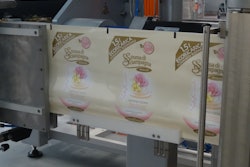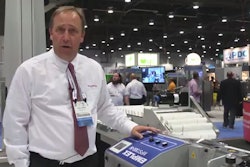1. Don’t wait until the last minute to involve operators and production people. Often it’s the engineers and the purchasing people who seem to know everything about the project, yet it’s the production people who have to live with the equipment. Get the production manager, operators, and maintenance people involved near the beginning of the project. They don’t need to be at every meeting, but they should be at the critical ones. They should be very familiar with the equipment once it reaches your floor.
2. Pay the supplier to install it. Engineers often think they can save the company money by installing the equipment themselves, but having the supplier install its own equipment or at the least oversee installation in what it considers to be the correct way can save you money down the road.
3. Staff the start-up with your best production people. Don’t choose a mediocre operator. Staff it with your sharpest operators who can teach other operators. While the oldest staff members will have the most experience, younger personnel sometimes are more open to newer technologies and may learn more readily from the supplier how to properly run and change over the equipment. This is especially critical if the machine is brand new technology for the plant, or is considered critical equipment for the company.
4. Find the line’s correct “rhythm.” Actual production conditions of infeed systems can cause inadvertent starting and stopping of vertical bagging equipment, which is a sign the machine is running too fast for the rate of product being produced, even though it may have been engineered for that speed. This can result in increased failures and rejects. Be willing to dial back on the speed; each line has its own rhythm, which may differ slightly from the designed speed. A slower speed may result in more cases out the door at the end of the day, thanks to fewer rejects and less downtime.
5. Minimize the supplier technician’s actual contact with your f/f/s machine. Normally during an install, everyone stays away from machine-builder technicians while they perform their work. This is a mistake. Rather than working with the equipment directly, have the supplier technician try to show your staff how to make the adjustments themselves. Your team will learn by doing. When that technician walks out the door for good, you don’t want the operator or mechanic having never solved problems or made adjustments during actual production conditions.
6. Document what you learn from the supplier technician. Depending on the complexity of the equipment, it may be worth it to keep the supplier technician in your factory an extra few days. During that time, follow that technician and learn everything you can to fill in any knowledge gaps among operators. Shadow the technician with a camcorder, snap plenty of photos with a digital camera, and write down what you’ve learned.
7. Document last-minute changes to line layouts. Often during installation, adjustments are made to how equipment is positioned on the actual floor, deviating from the line layout drawings prepared at the beginning of the project. Take the time to go back and modify these drawings so that the line layout drawings reflect the actual packaging line as built. Down the road, you’ll avoid lost time caused by a mismatch between what the drawing says and the reality on your floor.
8. Finish your punch list. During the Factory Acceptance Test or start-up, it’s common to compile a punch list of minor adjustments and then never follow it up once product is being successfully produced. Unfortunately, this can lead to problems down the road that impact product quality, such as a guiderail causing an inadvertent scuff on a pouch. Operators are less likely to bring these problems to anyone’s attention “because it’s always been done this way.” The punch list should be reviewed and approved by engineering, production, and management, with ownership transferred from engineering to production in a formal sign-off procedure.
9. Spare parts. Things do fail during start-up. Don’t forget to request a spare-parts list and order the critical spares so they are delivered prior to the equipment arriving at your factory.
10. Performance criteria. Linking a vendor payment to the equipment’s performance at start-up can be a strong incentive for the vendor. As part of a Site Acceptance Test, consider an extended testing period, covering enough shifts (or even weeks) to really understand the machine’s abilities and limitations. Be fair to the supplier, though, when demanding so much—don’t delay tests, or introduce a product change or variation, without consideration of the supplier’s time.
Liked this article? Download the entire playbook here.


























